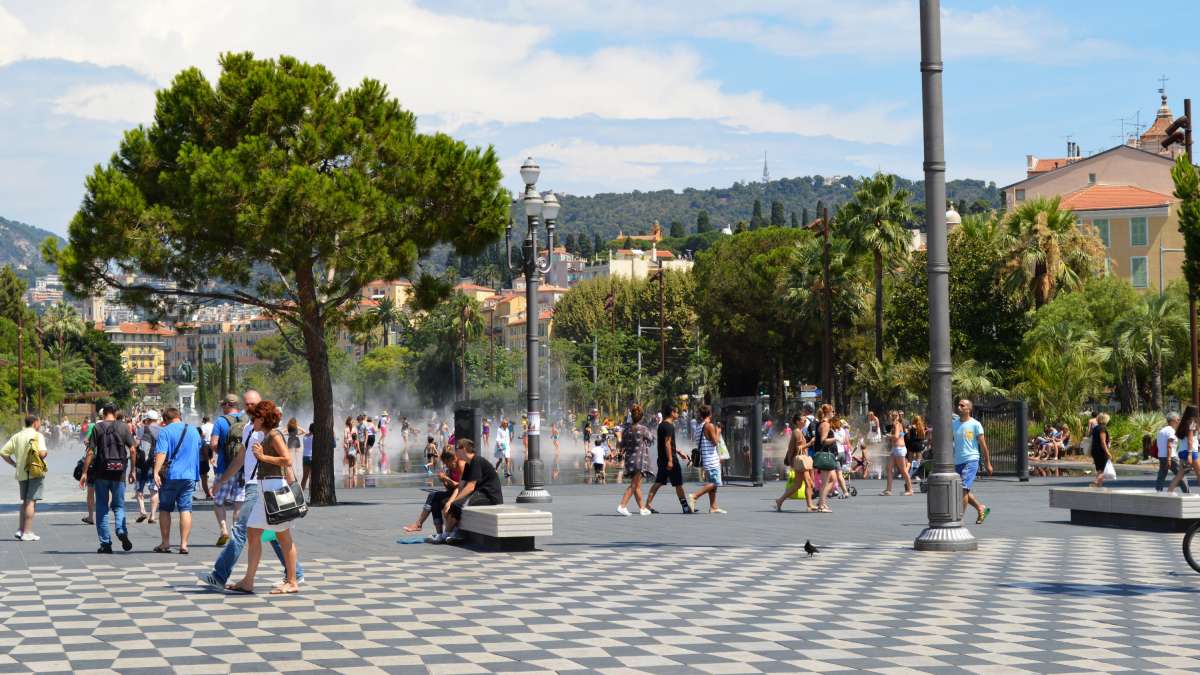
The publication of this practical guide follows an initial the first phase of a diagnosis of the accessibility of the pedestrian paths in the environment of three future Olympic sites. In the form of a methodological guide and recommendations, it aims to expand the recommendations resulting from the diagnosis so that they can be adapted to other territorial contexts.
Ten recommendations for successful accessibility of public spaces in the context of major events
 The Olympic and Paralympic Games (JOP) to be held in Paris in Paris in 2024 represent a major development challenge to accommodate millions of spectators. They also represent a unique opportunity to invest sustainably in the region, in in the region, in facilities and equipment that will be useful for everyone.
The Olympic and Paralympic Games (JOP) to be held in Paris in Paris in 2024 represent a major development challenge to accommodate millions of spectators. They also represent a unique opportunity to invest sustainably in the region, in in the region, in facilities and equipment that will be useful for everyone.
This ambition of a "legacy" reinforced compared to the previous editions of the Games passes notably by a drastic improvement of the accessibility of the entire travel chain (transport, public spaces, buildings). The prefecture of the Île-de-France region has entrusted Cerema a study aimed at providing methods and tools to achieve this objective.
Cerema has acquired solid experience in the field of accessibility, a cross-cutting theme par excellence, thanks to its comprehensive vision of its fields of of expertise. The lessons learned from this study have been synthesized in this book which provides methodological elements for the accessibility of public spaces and pedestrian walkways, particularly in facilities such as stadiums, cultural sites, etc.
This work, which involved many partners (Ministry, local authorities, transport syndicate, associations, etc.), opens with the essential content of the of the guide's content summarized in ten main recommendations. These recommendations are accompanied by a matrix of stakeholders, allowing to identify, for each major action, the stakeholders that Cerema recommends to position in steering, contributing or associating.
Leading a process for accessibility of public spaces
The guide includes a first part on governance (managing and leading a project). Its objective is to bring out, and manage a partnership approach around a project for accessibility.
This first part is therefore mainly addressed to decision-makers (event organizers, municipalities or public public establishment of inter-municipal cooperation - EPCI, manager of the of the establishment receiving the public - ERP, mobility organizing authority - AOM).
The recommendations proposed in the guide are organized by distinguishing 3 types of content:
-
THE STATEMENT : introductory, it sets out the problem, the issues and the needs.
-
THE ACTIONS: they address the main points of vigilance to be had for an inclusive inclusive design of public spaces, often proposing, in support, practical recommendations to be implemented by the project owners
-
Finally, FOCUSES illustrate or provide on certain topics, share best practices and good practices.
Below is a diagram describing the implementation of governance for the accessibility of public spaces in the case of an event that is likely to generate a large stream of pedestrians on the roadway:

Go beyond "regulatory" accessibility "and aim for a better quality of use of public spaces
The second part of the book, structured around 11 thematic sheets, brings together recommendations on the design of public spaces, allowing to better take accessibility into account. Its purpose is to summarize the recommendations on many aspects of urban development, which are often difficult to have an overall view.
These sheets deal in particular with the accessibility of bus stops, tramway stops, safety of pedestrian crossings, conflicts of use between pedestrian conflicts, signage, digital tools, the legibility of paths, surfaces, etc.
This second part aims at helping the project owners and project managers, beyond the regulatory requirements, to achieve quality accessibility focused on uses.

